sata andagi
Sata Andagi and More Great Ryukyu Cuisine

Anna Ayvazyan
Posted on October 29, 2024
Share:
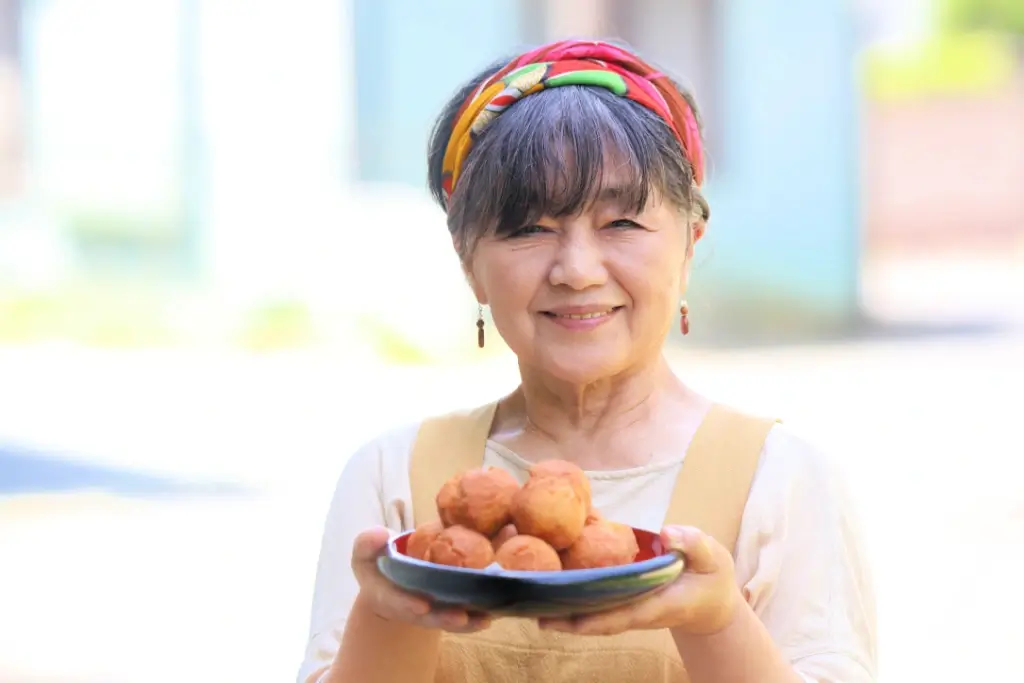
The Ryukyu Islands are a tropical paradise famous for their stunning landscapes and vibrant culture. In particular, Okinawa has unique culinary treasures, such as sata andagi, a beloved traditional snack that beautifully blends local flavors and history.
Where is Okinawa?
Okinawa Prefecture is a tropical island chain at the southernmost tip of Japan, approximately 400 miles southwest of the mainland. It forms part of the Ryukyu Islands, a broader archipelago that extends from Kyushu to Taiwan. The Ryukyu Islands have three central regions: the Satsunan Islands, Okinawa Prefecture, and Yonaguni.
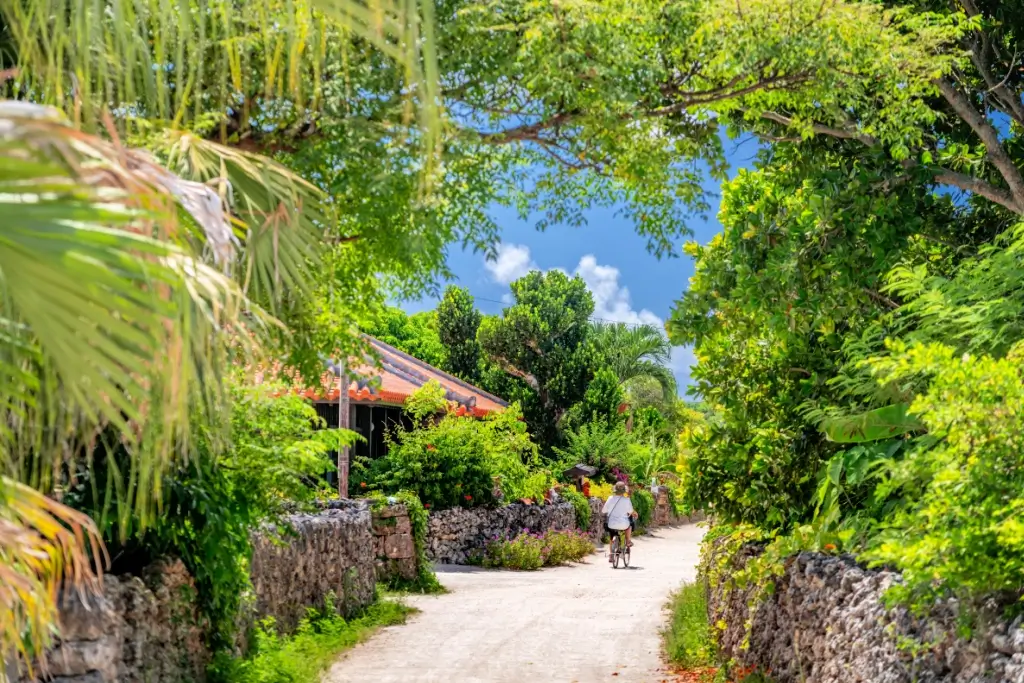
Okinawa comprises 160 islands, usually categorized into three regions: the Okinawa, Miyako, and Yaeyama Islands. These islands are renowned for their humid subtropical climate, attracting visitors with their stunning beaches and biodiversity. The Ryukyu region also offers a distinctive culinary experience, featuring local dishes unlike anything found on Japan’s mainland.
Why does it have good ingredients?
Okinawa’s subtropical location plays a key role in the quality of its ingredients and dishes. The islands’ warm, subtropical climate fosters the growth of vibrant, fresh produce like tropical fruits, medicinal herbs, and vegetables that thrive in its rich soil. Surrounded by nutrient-rich seas, Okinawa also enjoys a bounty of seafood that is central to many traditional dishes.

This abundant natural environment, combined with centuries of cultural influences from China and Southeast Asia, has also shaped Okinawa’s cuisine into something truly distinct. Not to mention, many dishes on Okinawa are hard to find elsewhere on the Japanese mainland. Featured below are the five dishes you must try when you visit Okinawa!
Sata andagi
Sata andagi, often called Okinawan doughnuts, are a beloved traditional snack. These deep-fried treats are made from a simple mixture of flour, sugar, and eggs, resulting in a sweet, cake-like texture. Generally, they are thought to have been introduced to Okinawa through China 500 years ago, as they are very similar to kai kou xiao.
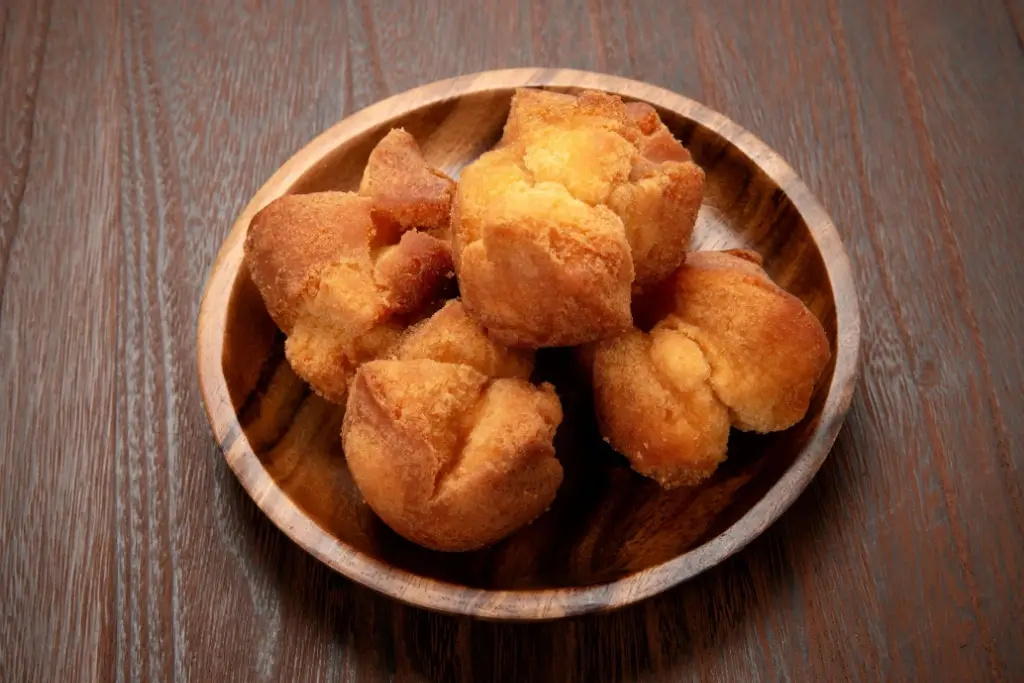
People typically shape them into round balls or flattened discs and fry them until golden brown. This creates a crispy outer layer while remaining soft inside. They are often enjoyed plain or flavored with sweet potatoes or chocolate.
Rafute
Rafute is a stewed pork belly dish that was originally a form of Okinawan Royal Cuisine. It is famous for its rich flavor and tender texture and for being associated with prolonging one’s life. The dish involves slow-cooking pork belly in soy sauce, sugar, and awamori (a local Okinawan liquor). This cooking method allows the meat to absorb the sweet and savory flavors, resulting in a melt-in-your-mouth experience.
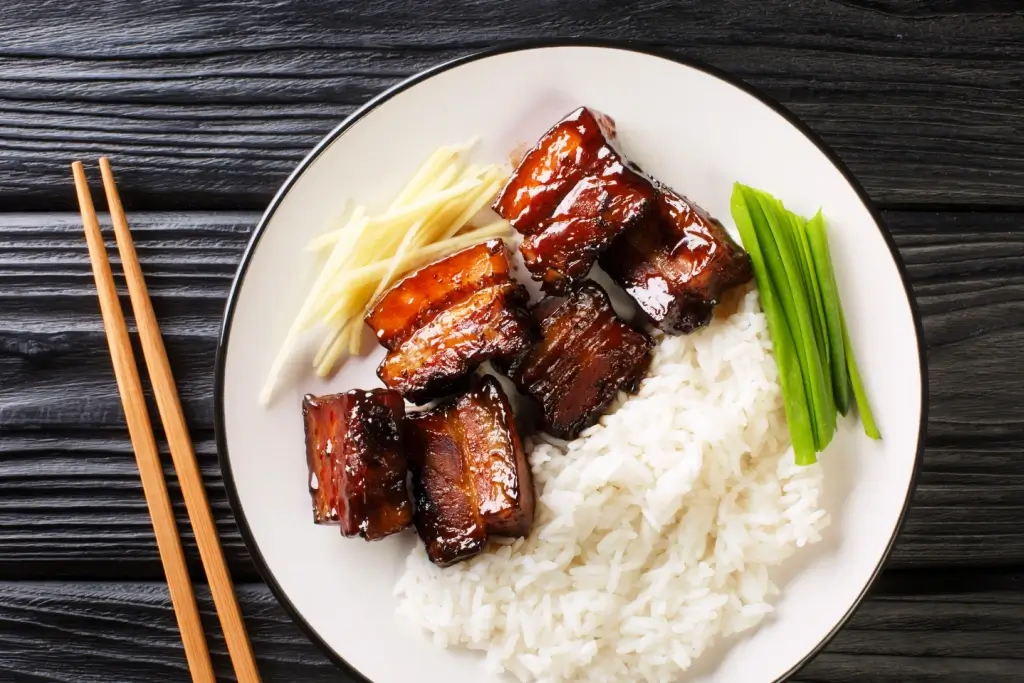
Chefs make traditional rafute using kokuto, a unique brown sugar sourced from Okinawa. While locals commonly serve it after Buddhist memorial services, you can also find it in numerous restaurants and izakayas across the region. Moreover, you can enjoy rafute best with a glass of awamori and pickled vegetables, enhancing its rich flavors and creating a delightful dining experience.
Taco rice
Taco rice is a beloved Okinawan dish that merges Mexican and Japanese culinary traditions into a unique and flavorful meal. It features a base of fluffy white rice topped with seasoned ground beef, mimicking traditional taco fillings. Shredded lettuce, diced tomatoes, and cheese are its toppings, creating a colorful and appetizing presentation.
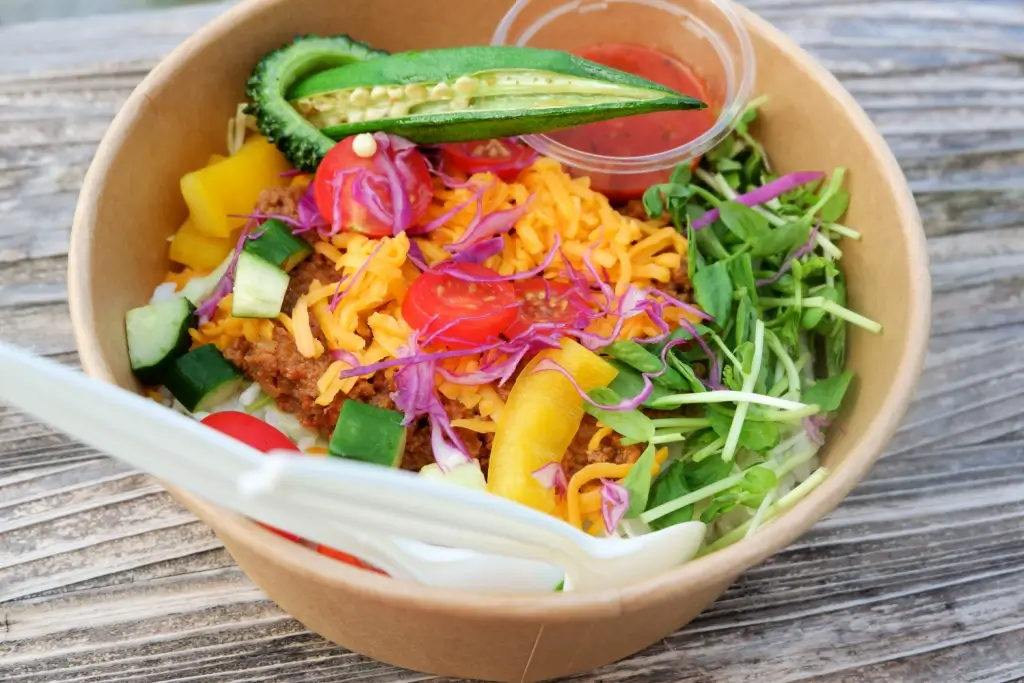
Often garnished with salsa, sour cream, or hot sauce, taco rice offers a delightful blend of flavors. This dish became popular in Okinawa after being introduced in 1984 by Matsuzo Gibo, who served it at eateries near Camp Hansen. Its convenience and deliciousness have made it a favorite in Japan’s homes, restaurants, and local food stalls.
Muchi
Muchi, also known as casa muchi or onimochi, is a traditional rice cake with a special place in Okinawan cuisine and folklore. It is made from glutinous rice steamed, pounded, and molded. As a result, the texture is chewy and often enjoyed as a sweet or savory snack. Muchi can use various fillings, such as sweet red bean paste and sweet potatoes.
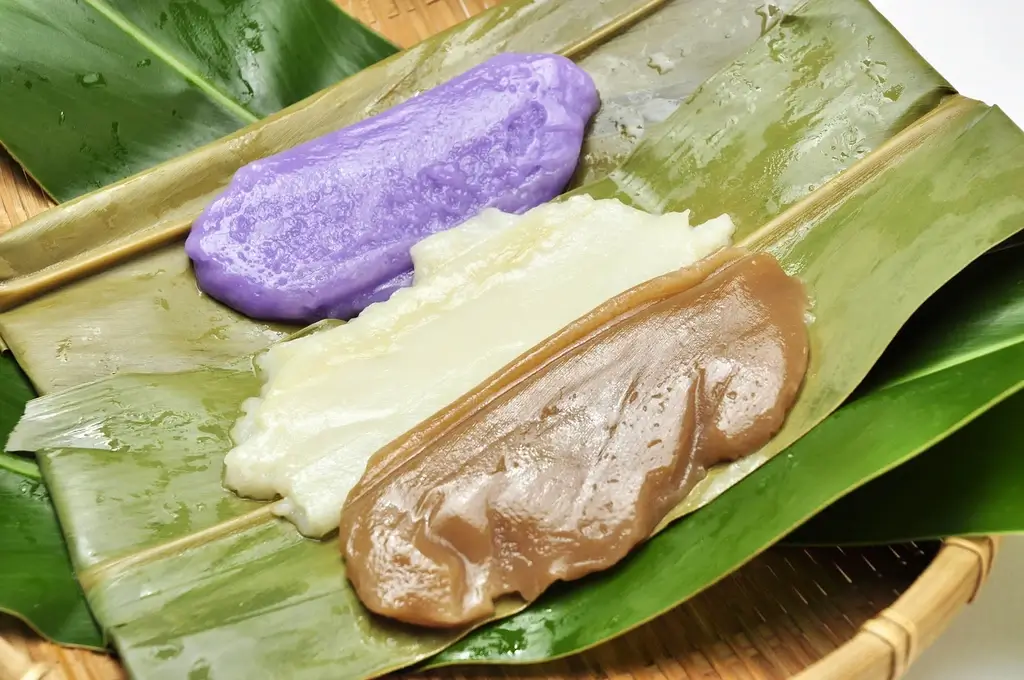
In Okinawa, locals traditionally enjoy much on December 8th as a lucky charm that dispels evil spirits and promotes good health. The ancient tale Kyuuyo, dating back over 800 years, references this dish, stating that muchi helps eradicate demons (oni). This historical connection has led people to call the dish onimochi, reflecting its significance in local folklore and cultural practices.
Mimiga
Mimiga, commonly known as pig ear, is a great delicacy people love for its distinct texture and flavor. One of the most common culinary philosophies in the Ryukyu region is not to waste any part of a pig. This philosophy is due to the cultivation of this unique dish. Typically boiled or braised, it is served thinly sliced and garnished with ponzu sauce and a peanut dressing.
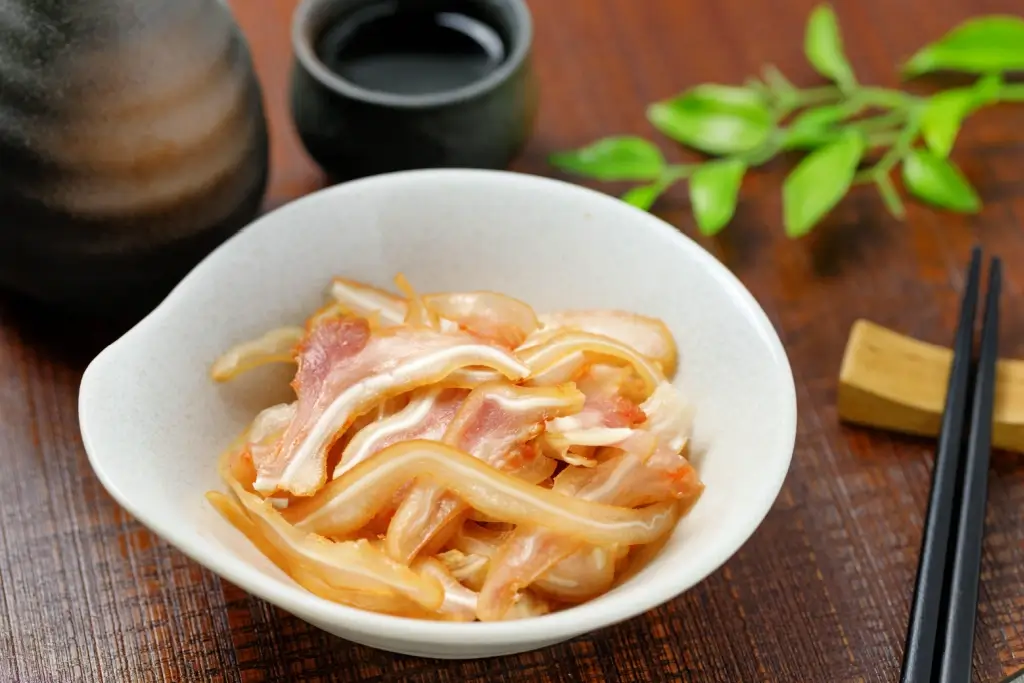
This combination creates a refreshing and savory dish that appeals to various palates. Often enjoyed as an appetizer or snack, mimiga pairs well with local sake in izakayas. Its popularity reflects the region’s culinary creativity and resourcefulness in utilizing all parts of the pig in traditional dishes.
Why should I try Okinawan foods like sata andagi?
Okinawan cuisine offers a unique culinary experience that reflects the region’s rich history and abundant natural resources. One dish that stands out is sata andagi, a traditional snack not easily found on the mainland. This delightful treat showcases the lasting influence of Chinese culture on Ryukyu cuisine. Alongside local favorites like rafute, taco rice, muchi, and mimiga, sata andagi highlight Okinawa’s unique flavors and ingredients.
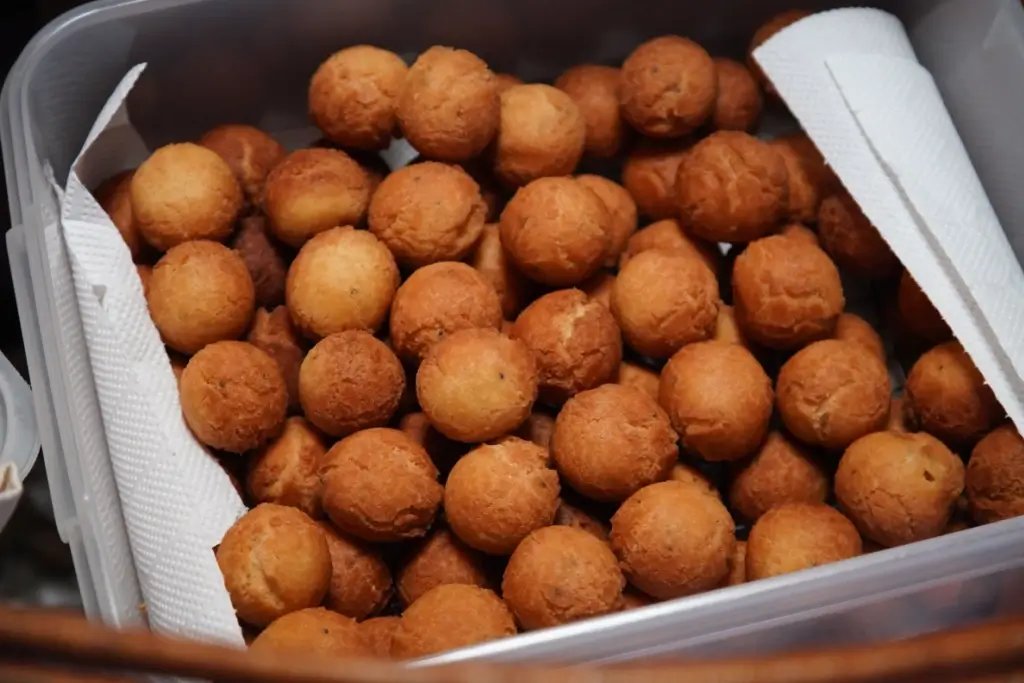
By exploring these dishes, you can immerse yourself in Okinawa’s vibrant culture and traditions, transforming your culinary journey into a truly memorable experience. What Okinawan dishes do you want to try? Let us know in the comments below!

Discover authentic flavors with Sakuraco
Get Sakuraco 

Discover authentic flavors with Sakuraco
Get Sakuraco 
Related Articles

Japan Christmas Traditions: Best Luxury Dinners in 2025!
Finding a memorable Christmas dinner in Japan can range from relaxed hotel buffets to refined multi-course experiences. Celebrating over dinner is considered a classic alongside other Christmas traditions, such as KFC.

Aaron and Claire Make the Best Japanese Comfort Food: Yakisoba
If you’re craving something quick, satisfying, and full of flavor, Aaron and Claire have you covered. In this video, Aaron shares how to make yakisoba, a simple Japanese stir-fried noodle dish that’s easy to cook and incredibly addictive. Forget the instant packs or greasy takeout, this homemade version is fresh, flavorful, and the kind of…
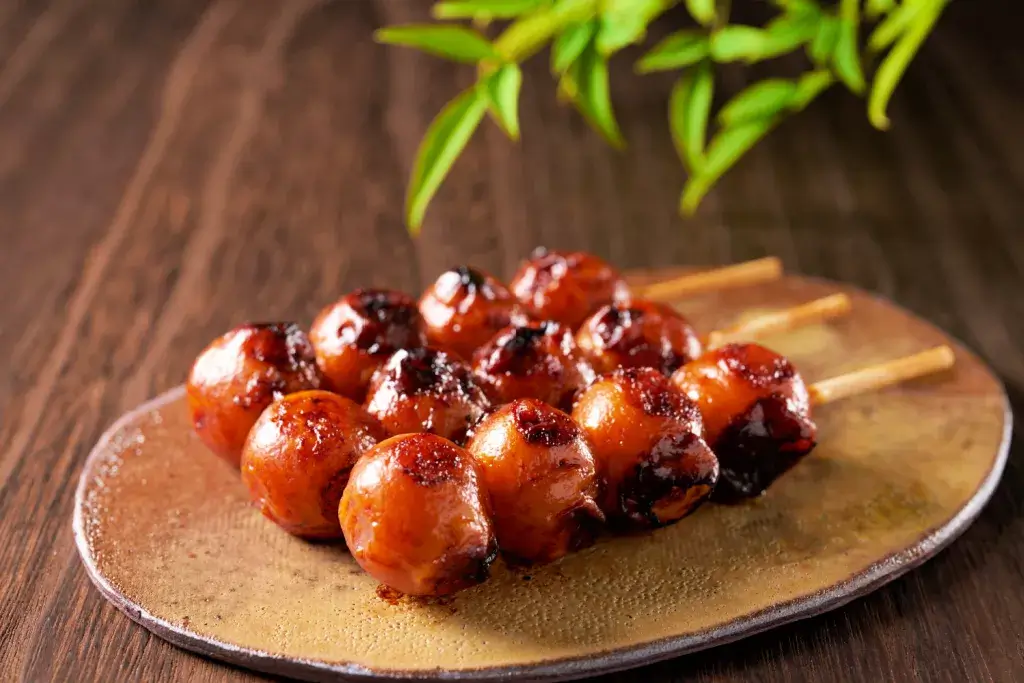
Mitarashi Dango: Japan’s Sweet and Savory Rice Treat
If you’ve ever visited Japan or seen photos of its food, you might have spotted little rice dumplings on a stick. These chewy treats are called mitarashi dango, and they’re one of Japan’s most beloved traditional sweets.

Wasanbon from Shikoku: Japan’s Most Delicate Sugar
Shikoku is the smallest of Japan’s four main islands, a peaceful region renowned for its scenic beauty and tranquil lifestyle. It’s also home to a special kind of sugar that perfectly reflects this relaxed way of life — wasanbon.



